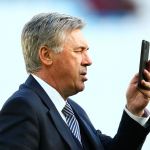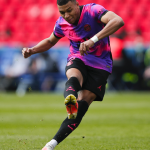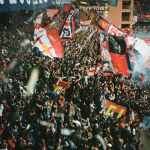
How do football coaches use social networks?
Boomer, businessman, corporate and much more
November 27th, 2020
All sports players - clubs, federations, players - now invest a lot in digital strategies, but there is a new category that is changing the way they are used: coaches. The approach that team managers have has evolved over the years has definitely influenced the fact that the new generation of coaches has a considerable number of players who have already experienced football in the age of social media: Pirlo, Lampard, Arteta, Henry, Seedorf, Inzaghi, Gerrard are among the best examples of the case. The direction and strategies, however, are also changing for those who have been in the sector for a long time before the definitive advent of social media.
The transition from player to coach has upset the use of Instagram for all those who have gone from a suit to a suit. This trend leads us to think that coaches - especially if they are icons of a club as in the case of Pirlo and Lampard - follow the same corporate guidelines to which players are subject, configuring them as images from society. Having a freedom of movement within limits, managers often rely on companies specialized in digital communication, to coordinate the communication of personalities always in the light of the sports spotlight. Agencies such as SoBe Sport - which manages clients such as Inzaghi, Oddo, Maldini, Nesta and Sheva - and Starsonfield - which looks after the communication of Pirlo, Toni and Max Allegri - are part of the market which is still small. The size of this business sector often leads to very similar communications.
Antonio Conte is the best picture of the tendency on the part of the clubs to consider their coaches like the players as a social presence. Mister Conte has created a new profile from scratch, following a very institutional communication: preparation for the match, motivational posts during the week and commentary on the Sunday match are the new daily bread of the coaches.
There are clearly many cases in which social media are not part of everyday life: Guardiola, Luis Enrique, Allegri, Sarri, Gattuso, Simone Inzaghi, Tuchel are just some of the names that don't live on Instagram. Then there are those who manage to give more space to their business like Pirlo, like Simeone and like Mourinho, even if the Special One requires a special focus because, as always, it defies all logic. Mou's profile has completely changed shape since he signed with Spurs, becoming an alternative account of the manager's life. The personal point of view seems to be detached from the standards of the company, as if the Portuguese could only be himself - even when showing his Hublots. The comments that were once seen on the microphones have been transferred almost in full to Instagram and the followers - exceeded one million with just 52 posts and only 9 months of life - are ready to transform Mourinho's captions into continuous memes. From the post-game of a match played undertone ("When you win but you don't play especially well" or "Bad perfomances deserve bad results. Tomorow 11 AM training") to the awareness of changing times, with an entire locker room folded to the power of social media with no one to celebrate with.
Mourinho is more than anything else an exception, a personality who makes a funny approach his strength and his image. Many other colleagues, however, use an opposite approach, with a use that is much closer to the boomers. Ancelotti, Koeman, Benitez and many of that generation set almost fake social presence modes, almost as if they were remote controlled.
The new wave, much younger than those who started this profession in the 80s or 90s, chooses different methods of use, halfway between being still a player and being in charge of an important team. Lampard and Pirlo - two who started using social media in the same period, that is from the transition to American football in 2015 - have two different mentalities: on the one hand, the Maestro combines pitch and business (ranging from Rolex to vacuum cleaners) while remaining inside the company restrictions, on the other hand the Chelsea manager boasts a great fanbase that practically no longer sees him on social media since he became manager of the Blues.
Times have changed and the image that millions of users can see on Instagram is - rightly or wrongly - considered as the mirror of the coach's personality. If once the media made known a scandal through the front pages of newspapers, now an instagram story is enough to unleash hell. Roberto Mancini is well aware of this and has stumbled upon one of the most inconvenient positions for a figure of this caliber in the intensification of social content after the appointment of national team coach. But the Mancio, between a Richard Mille and a Maserati, is perhaps the perfect example of how coaches use social media.
Only in a small minority of cases - for info on the intercom to Mr. Liverani - the profiles of the coaches are managed directly by them, but even where there is any structure behind them the results are not guaranteed.



































